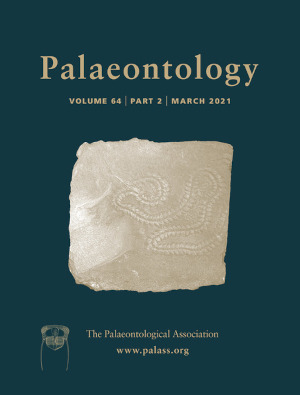Reg. Charity No. 1168330

Little is known of dinosaur population biology due to insufficient information on age-dependent fecundities and mortalities. So far, survivorship curves (SC) of only six dinosaurs (four tyrannosaurs, one ceratopsian, one hadrosaur) have been erected from bone assemblages of aged specimens. They indicate high survival throughout most of their life with presumably higher mortalities after hatching and increasing mortalities towards its end. However, none of these studies recognized that to infer a reliable SC for a taxon, the assemblage must preserve a stationary age distribution (i.e. one which is stable, with constant population size over time as overall fecundities match mortalities, hereafter SAD population). To assess SCs of these dinosaurs, I built a simple population model with age-dependent fecundities and survival rates. Its three input parameters are maximum longevity, age at sexual maturation and maximum annual offspring number, for which information exists on these dinosaurs. As bone histological studies and scaling relationships provide estimates on these parameters, my model is also applicable to other extinct taxa. Modelling suggests that bone assemblages did not preserve SAD populations. SCs determined for SAD populations of Albertosaurus sarcophagus, Gorgosaurus libratus, Dasplatosaurus torosus and Tyrannosaurus rex indicated that low mortalities followed high mortalities in early life or that mortality rates were rather constant throughout their life. In Psittacosaurus lujiatuensis, modelling suggests low mortalities throughout most of its life that increase towards its end. Due to its simplicity, my model was unable to render composite SCs, specifically the sigmoidal shape previously predicted for Maiasaura peeblesorum.
AcknowledgementsVery helpful comments on an earlier version of this paper by Daryl Codron and an anonymous reviewer are gratefully acknowledged. I thank the Deutsche Forschungsgemeinschaft (DFG) for partial financial support (grant GR 2625/2-2 to EMG). Open Access funding enabled and organized by Projekt DEAL.